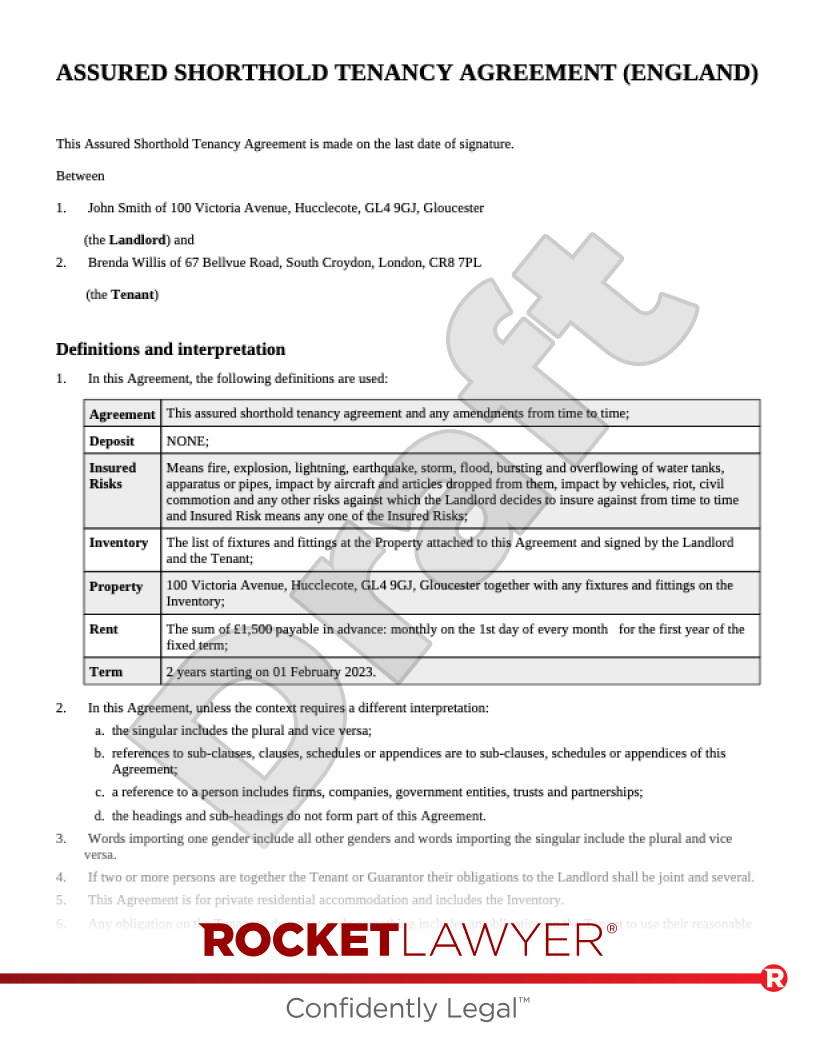The deposit
When you rent out a residential property you are able to ask the tenant for a deposit to hold during the term of the tenancy to cover any non-payment of rent, cleaning, damage or breakages that may occur during the tenancy.
You can decide on the level of the deposit but it is usual to ask for one month’s rent in advance.
The maximum level of tenancy deposit you can ask a tenant to pay in England and Wales depends on the total annual rent for the property:
-
up to five weeks’ rent if the total annual rent for the property is less than £50,000
-
up to six week’s rent if the total annual rent for the property is £50,000 or above
In England, deposits taken by landlords of assured shorthold (AST) tenants (with rent of up to £100,000 per year) must comply with the tenancy deposit protection scheme. In Wales, deposits taken by landlords of occupation contracts (with rent of up to £100,000 per year) must comply with the deposit protection scheme.
In Scotland, deposits cannot be more than 2 months' rent. Further, all deposits taken by all landlords must be paid into an approved deposit protection scheme.
Tenancy deposit schemes
If you grant an AST or occupation contract the deposit must be protected in an approved scheme.
The Government-backed schemes are:
There are 2 types of schemes to protect the deposit – a custodial tenancy deposit scheme and an insurance deposit scheme and the landlord decides which scheme to use not the tenant.
In Scotland, the Government-approved schemes are:
In Scotland, the Government has only approved the use of custodial schemes.
The scheme protects the deposit and helps with any disputes for its return to the tenant at the end of the tenancy and the Alternative Dispute Resolution service is free of charge.
A deposit does not need to be protected if you are granting a lodger agreement.
Insurance tenancy deposit schemes
The landlord keeps the deposit but it is secured by paying a fee and insurance premiums to the scheme. These premiums will be used to pay the tenant if you do not use the deposit correctly.
Custodial tenancy deposit schemes
The landlord pays the deposit into the scheme within 30 days of receiving it from the tenant.
The deposit is held by the scheme until the tenancy comes to an end when the deposit (or the remaining balance) is returned to the tenant, usually within 10 days following the parties agreeing on what the returned sum should be
What if the landlord does not comply?
A landlord must provide a tenant with prescribed information about the scheme within 30 days of receiving the deposit. For more information, read Prescribed information for tenancy deposits (for England and Wales) or Prescribed information for tenancy deposits in Scotland (for Scotland).
If a landlord fails to join a tenancy deposit scheme and protect the tenant's deposit they may be liable for certain penalties. If a court is not satisfied that the deposit is adequately protected, it can order a penalty for a fine of 1 to 3 times the amount of the deposit. As a result, the landlord may be unable to obtain possession of the property (eg using a Section 21 (Form 6A) notice for England).
Renewing the fixed-term tenancy
If a fixed-term tenancy is renewed or there is a change in the tenancy terms, then the deposit may need to be re-protected as it is essentially treated as a new tenancy under the legislation. The landlord should check the scheme rules applicable to the scheme that is protecting the deposit. These can usually be found on their website. Some schemes such as the Deposit Protection Service close the deposit on the tenancy end date if they are not advised of an end-of-tenancy intention to renew.
Can you deduct money from the tenant's deposit?
Landlords can usually make certain deductions from the tenant's deposit after they leave the rented home.
Deductions from the deposit can usually be used to cover:
-
unpaid rent
-
damage to the property
-
missing items identified in an inventory
-
cleaning costs
Damage to property
The inventory should state the condition of items within the property when the tenant moved in. You will need to check the condition of the property against the inventory. You can't deduct money from the deposit for normal wear and tear, but you can for damage.
Examples of damage are:
-
a burn hole or nail varnish spill on a carpet
-
holes in plaster or damaged paintwork caused by hanging pictures on a wall
-
torn or missing curtains
Examples of normal wear and tear are:
-
worn carpets
-
minor scrapes and scuffs on the walls
-
faded curtains
If you need to replace what the tenant has damaged, you should do so on a like-for-like basis. For example, if they damage a cheap mattress, you can't make the tenant pay for a better quality new one.
Making deductions
All tenant deposits must be placed in one of Government-approved schemes. This ensures that the landlord can't deduct money from the deposit without the tenant's permission. You must inform the tenant and ask for their permission to deduct money from the deposit. If the tenant agrees then you will be able to make the deduction through the deposit scheme.
However, if the tenant disagrees and does not give permission, you will need to use the dispute resolution service that each of the schemes provides. You will need to make sure you have all the necessary evidence you need to support any claim in a formal dispute. Ensure it is detailed and thorough. If you are involved in a dispute over the deposit, you should submit any relevant information in order to support your claim.
Follow the procedure that each of the schemes has in place before you make deductions if the tenant disagrees.




